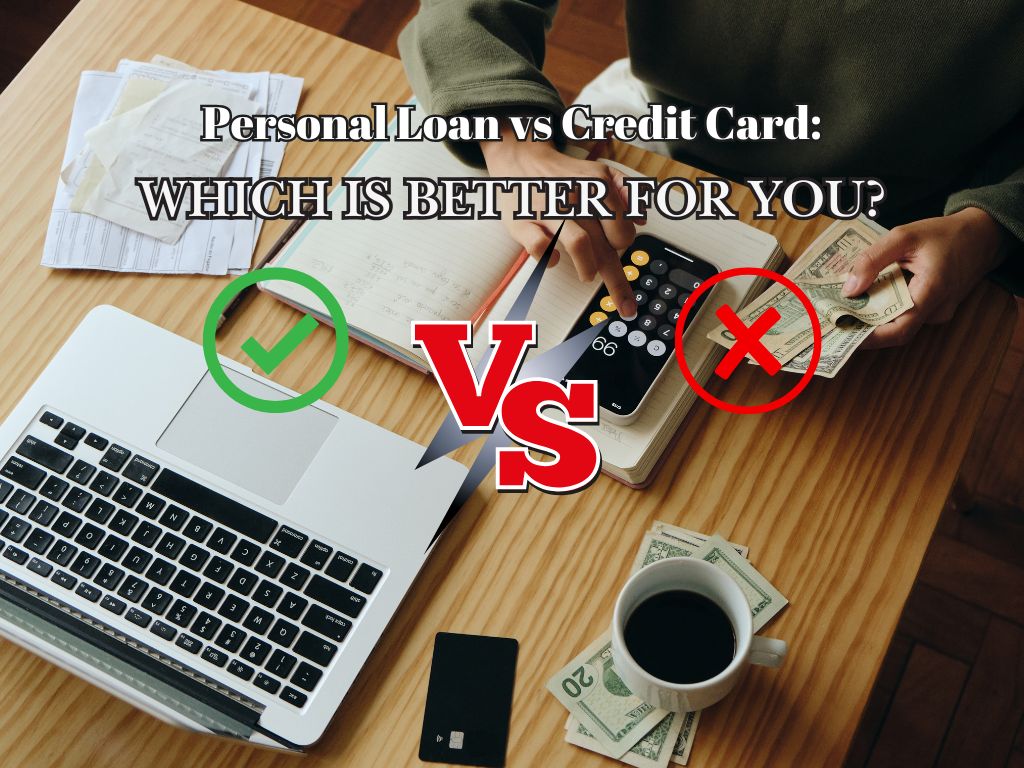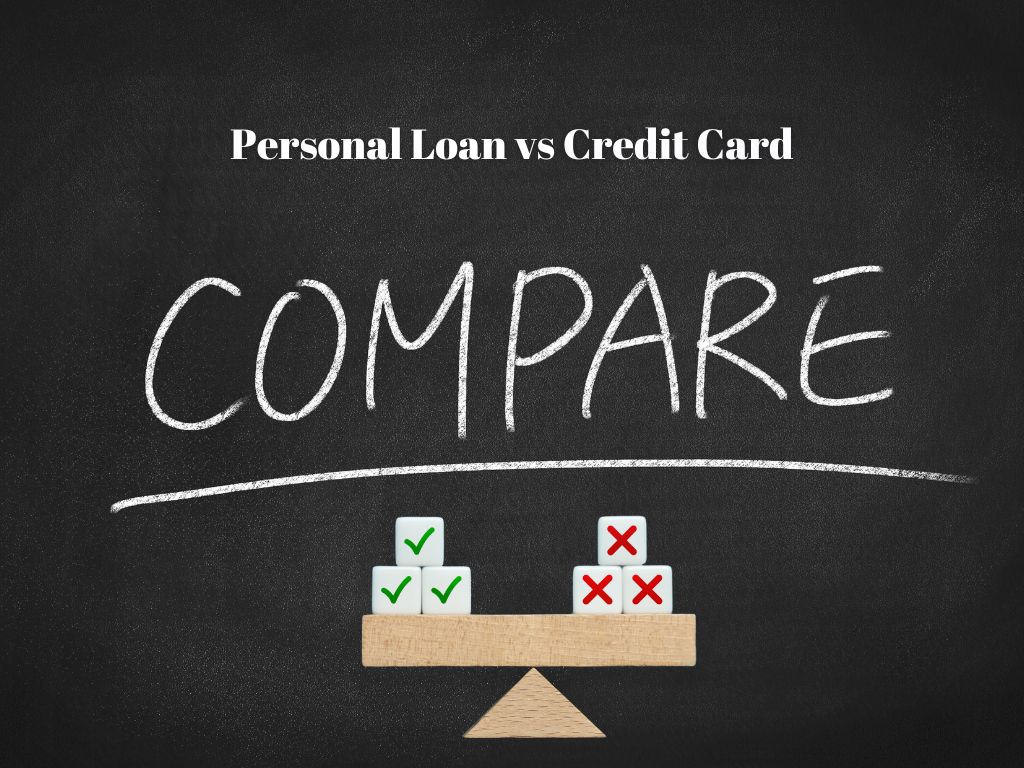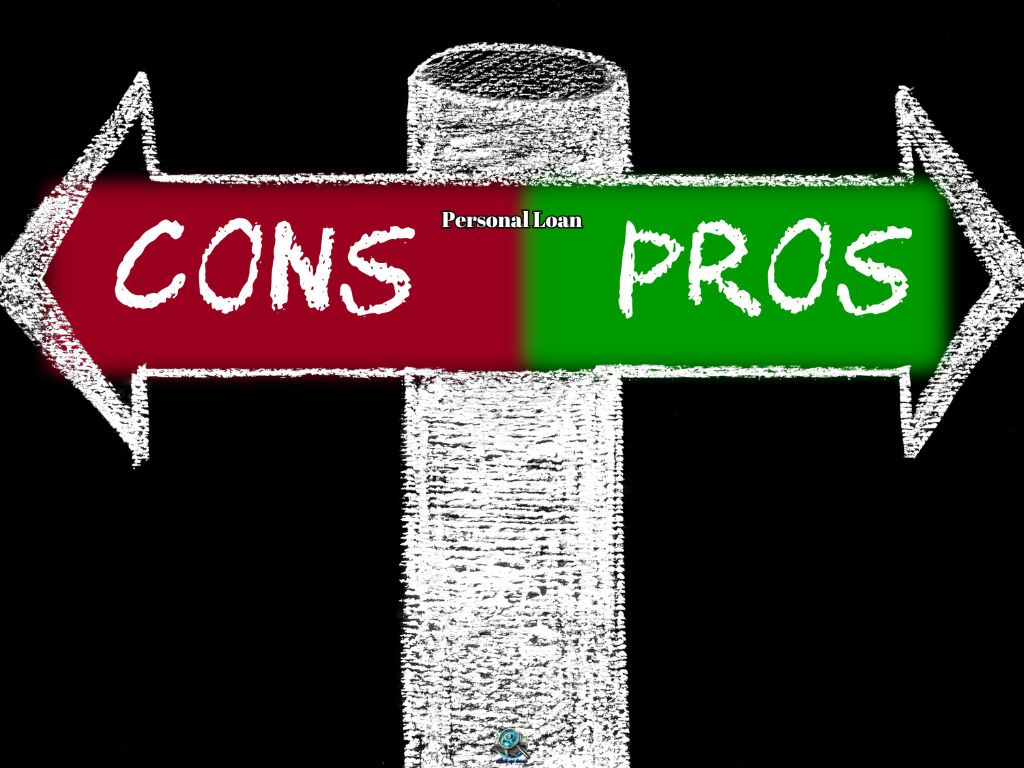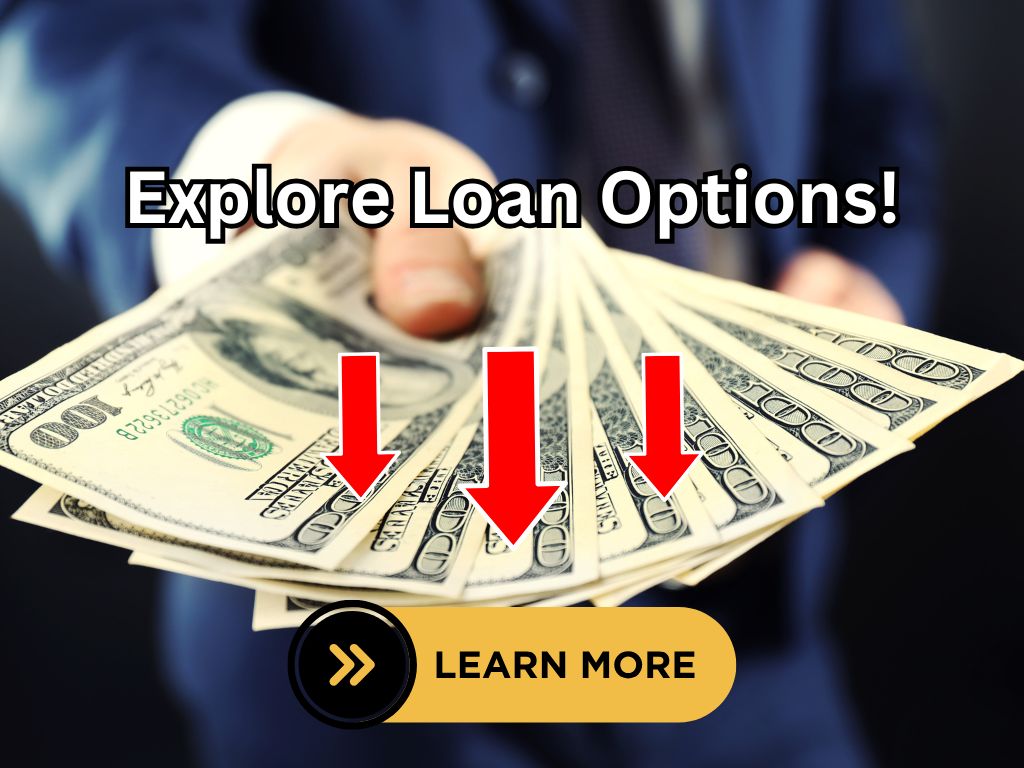Introduction
Choosing between a personal loan and a credit card isn’t just about interest rates, it’s about control, cost, and how you manage debt over time.
Pick the right one, and you can save money, simplify payments, and strengthen your credit.
Pick wrong, and you could end up trapped in revolving balances or unnecessary loan fees.
The key is understanding how each option really works.
A personal loan gives you a lump sum with fixed monthly payments and a clear payoff date.
A credit card, on the other hand, offers flexible access to funds but can become expensive if balances carry month to month.
This guide breaks down the real-world differences between them: how they’re structured, what they cost, when to use each, and how they affect your credit.
By the end, you’ll know exactly which borrowing option fits your financial goals and lifestyle.
Key Takeaways
Personal Loans vs Credit Cards: How to Choose the Right Option
- Personal loans offer a lump-sum payment, fixed interest rates, and predictable monthly repayments, making them ideal for debt consolidation or large, one-time expenses.
- Credit cards provide flexible, revolving access to funds, suitable for daily spending, emergency expenses, and reward programs — but typically carry higher interest rates.
- Cost Considerations: Personal loans often cost less over time due to lower fixed rates, while credit cards can become costly if balances aren’t paid quickly.
- Repayment Flexibility: Credit cards allow flexibility but risk extended debt accumulation, whereas personal loans encourage disciplined budgeting through fixed repayments.
- Credit Score Impact: Personal loans improve your credit mix, while credit cards significantly influence credit utilization and long-term credit health.
- Decision Factors: Base your decision on your credit profile, repayment capability, intended use of funds, and whether you prioritize financial predictability or spending flexibility.
- Next Steps: Compare multiple lenders and credit card providers to secure the most beneficial rates, terms, and features aligned with your financial goals.
Disclaimer: This site contains affiliate links. If you make a purchase, we may earn a commission at no extra cost to you.

What’s the Real Difference Between a Personal Loan and a Credit Card?
At first glance, both personal loans and credit cards let you borrow money but the way they work, cost, and fit your goals are completely different.
The main difference comes down to how you access funds and repay them:
- A personal loan gives you one fixed lump sum, repaid in equal installments over a set term.
- A credit card gives you a revolving credit line you can borrow, repay, and borrow again as needed, up to your limit.
This structural difference shapes everything: interest, flexibility, cost, and how each affects your credit score.

💡 At a Glance: Personal Loan vs Credit Card
| Factor | Personal Loan | Credit Card |
|---|---|---|
| Structure | One-time lump sum, fixed repayment term | Revolving credit line, borrow as needed |
| Interest Rates | Typically 5% – 36%, fixed | Typically 15% – 30%, variable |
| Repayment | Fixed monthly installments | Flexible payments; minimum due monthly |
| Best For | Large, planned expenses or debt consolidation | Everyday spending, emergencies, or rewards |
| Risk Level | Predictable, lower long-term cost | Easy to overspend, higher interest if unpaid |
How These Differences Affect You
Predictability vs. Flexibility:
- Personal loans win for predictable payments and structured payoff schedules ideal for disciplined debt management.
- Credit cards excel in flexibility and convenience, letting you handle short-term cash flow needs or emergencies.
Interest Behavior:
- With loans, rates are usually locked in.
- With cards, rates vary and interest compounds faster, especially if you carry balances.
Financial Planning Impact:
- A personal loan simplifies budgeting; you always know your payoff date.
- A credit card offers freedom, but without discipline, it can easily extend debt indefinitely.
(According to 2025 Federal Reserve consumer credit data, the average personal loan APR is 11.8%, while credit cards average 21.3% nearly double the cost over time.)

When Does a Personal Loan Make More Sense?
A personal loan makes the most sense when you need a set amount of money upfront and prefer a predictable repayment plan. It’s structured, clear, and built for borrowers who value control over flexibility.
Unlike credit cards, where your balance can fluctuate month to month, a personal loan locks in your rate, payment, and payoff date from day one making it ideal for major financial goals or debt restructuring.

💡 Best Times to Use a Personal Loan
| Situation | Why a Personal Loan Fits |
|---|---|
| Debt Consolidation | Combines multiple high-interest debts into one fixed monthly payment, often lowering total interest. |
| Large One-Time Purchases | Great for funding weddings, home projects, or medical bills with a clear repayment schedule. |
| Home Improvement Projects | Predictable terms help you manage renovation budgets without running up revolving debt. |
| Major Life Events | Financing education, moving costs, or emergencies where a lump sum is more practical than revolving credit. |
Pros and Cons of Personal Loans
Pros
✅ Fixed monthly payments — Easier to budget and plan.
✅ Potentially lower interest rates — Especially for borrowers with good credit.
✅ Defined payoff date — Clear timeline to become debt-free.
✅ Improves credit mix — Adds installment credit, which can boost your score over time.
Cons
⚠️ Less flexibility — Once the loan is issued, you can’t borrow more without reapplying.
⚠️ Possible origination fees — Some lenders charge upfront fees (usually 1–6% of the loan).
⚠️ Longer approval times — Applications may require more documents and review compared to credit cards.
When a Personal Loan Might Not Be Ideal
If your expenses are unpredictable or you might need smaller, recurring access to cash, a personal loan can feel restrictive.
It’s also not the best fit if you’re unsure you can commit to fixed monthly payments missing one can damage your credit or trigger late fees.
(Based on 2025 Experian data, borrowers using personal loans for debt consolidation save an average of 22–28% in total interest compared to maintaining multiple credit card balances.)

When Is a Credit Card the Smarter Move?
Credit cards work best when you need ongoing access to funds, want payment flexibility, or plan to earn rewards through responsible spending.
Unlike personal loans which give you a lump sum with a fixed payoff date, credit cards offer revolving credit, meaning you can borrow, repay, and borrow again as needed.
Used wisely, they can boost your credit, provide emergency backup, and even pay you back through rewards. Used poorly, they can trap you in long-term debt.

💡 Best Times to Use a Credit Card
| Situation | Why a Credit Card Fits |
|---|---|
| Everyday Spending | Ideal for daily expenses like groceries, gas, or subscriptions — especially if you pay balances in full each month. |
| Short-Term Emergencies | Offers instant access to funds when timing matters (e.g., medical bills or urgent repairs). |
| Earning Rewards or Cashback | Frequent spenders can benefit from rewards programs, points, or travel perks. |
| Building or Rebuilding Credit | Consistent on-time payments and low utilization can strengthen your credit score over time. |
Pros and Cons of Credit Cards
Pros
✅ Convenient and accessible — Widely accepted and easy to use anytime.
✅ Flexible repayment — Pay in full or spread out payments based on your situation.
✅ Rewards potential — Earn cashback, miles, or points on everyday purchases.
✅ Emergency cushion — Immediate backup for unexpected costs.
Cons
⚠️ High interest rates — Carrying balances can double or triple your cost over time.
⚠️ Debt creep risk — Easy access to credit can lead to overspending.
⚠️ Variable payments — Harder to plan monthly budgets compared to fixed loans.
⚠️ Credit utilization sensitivity — High balances can quickly lower your credit score.
When a Credit Card Might Not Be Ideal
If you tend to carry balances or struggle with budgeting discipline, credit cards can become expensive fast.
They’re also a poor fit for large, planned purchases that would take months or years to pay off; in that case, a fixed-rate personal loan offers more stability and lower total interest.
(According to 2025 Federal Reserve consumer finance data, the average credit card APR reached 21.6%, compared to just 11.8% for personal loans, nearly twice as costly when balances are carried.)

Comparing the Real Costs and Long-Term Risks
Understanding how personal loans and credit cards differ in total cost and long-term impact is where smart borrowing decisions are made.
Both can serve you well or work against you depending on how interest builds and how consistently you repay.
A personal loan’s fixed rate and payoff schedule make its cost easy to predict.
A credit card’s revolving balance and compounding interest can stretch small debts into long-term burdens if not managed carefully.

💡 Cost Comparison: Personal Loan vs Credit Card
| Scenario | Personal Loan | Credit Card |
|---|---|---|
| Borrowing Amount | $5,000 | $5,000 |
| Average APR | 10% (fixed) | 20% (variable) |
| Repayment Term | 3 years, fixed | Flexible, depends on payments |
| Monthly Payment | ~$161 | ~$133 (minimum) |
| Total Interest Paid | ~$796 | ~$1,800+ (if paying minimum) |
| Total Cost | ~$5,796 | ~$6,800 or more |
| Key Insight | Predictable, lower total cost | Higher cost if balance isn’t paid quickly |
Long-Term Credit Impact
Your repayment behavior, not the product itself drives your credit score outcome.
Still, each affects your profile differently:
Credit Cards:
- Influence credit utilization ratio using more than 30% of your limit can hurt scores.
- Older cards improve credit age, boosting your long-term score.
- Missed payments show up fast and weigh heavily.
Personal Loans:
- Add installment credit to your mix, diversifying your profile (a positive signal).
- Timely payments strengthen your record predictably.
- Applying for multiple loans in a short period can temporarily lower your score.
⚠️ Risk Breakdown: What Can Go Wrong
| Risk Area | Personal Loan | Credit Card |
|---|---|---|
| Overspending | Less likely, since funds are fixed | High risk — easy to overuse available credit |
| Interest Accumulation | Fixed, predictable | Variable and compounding |
| Late Payments | Fees and possible credit damage | Fees, higher rates, utilization spike |
| Debt Duration | Finite — clear payoff date | Potentially indefinite — no fixed end |
| Emotional Trap | “Commitment fatigue” (long payoff) | “Debt creep” (slow buildup) |
Key Insights
If you want control and cost predictability go with a personal loan.
If flexibility matters more and you can pay balances in full, a credit card can be an efficient tool.
Either way, interest rates and repayment discipline define your financial outcome more than the credit product itself.
(Based on 2025 CFPB and Experian data, credit card holders carrying monthly balances pay an average effective interest cost 65–85% higher than borrowers with fixed personal loans.)

How to Decide Which Option Fits You Best
There’s no one-size-fits-all answer when comparing personal loans and credit cards.
The better choice depends on your financial goals, repayment discipline, and how long you plan to carry the debt.
The right tool can help you save money, protect your credit, and create flexibility.
The wrong one can lead to higher costs, mounting interest, or unpredictable payments.
Let’s walk through how to evaluate your situation step by step.

💡 Key Factors to Consider Before Choosing
| Factor | Choose a Personal Loan If… | Choose a Credit Card If… |
|---|---|---|
| Credit Score | You have good credit (670+) and want lower fixed rates. | Your credit is average but improving, or you want to build credit. |
| Borrowing Need | You need a specific lump sum for a defined expense. | You need flexible access to smaller, recurring funds. |
| Repayment Style | You prefer predictable monthly payments and a clear payoff date. | You want repayment flexibility with the option to pay early. |
| Cost Control | You value structure and total cost predictability. | You can pay off balances monthly to avoid high interest. |
| Purpose | Consolidating debt, large purchases, or home projects. | Everyday purchases, emergencies, or earning rewards. |
Decision Framework: The 3-Step Check
- Define Your Goal
Ask yourself: Is this a one-time expense or an ongoing need?
- If it’s a defined purchase or consolidation, a personal loan gives structure and stability.
- If it’s revolving expenses or unpredictable spending, a credit card provides flexibility.
- Assess Your Cash Flow
- Fixed income → choose a personal loan for consistent payments.
- Variable income → a credit card may help manage uneven cash flow if used responsibly.
- Run the Cost Simulation
- Compare APRs, fees, and total repayment using both products.
- Many online calculators (including ours) show how quickly credit card debt can snowball compared to a fixed-rate loan.
Common Mistake: Choosing for Convenience Over Strategy
Many borrowers choose credit cards because they’re easier to get, not because they’re the smarter fit.
A 20-minute loan application could save you thousands in interest over time.
If you’re planning to carry a balance for months, a personal loan is almost always cheaper.
If you’re confident you’ll pay your card off monthly, credit cards reward speed and discipline.
Bottom Line
- Go with a personal loan when you need stability, structure, and clear timelines.
- Stick with a credit card when flexibility, convenience, and short-term access matter more.
- In either case, your repayment behavior matters more than the credit type itself.
Make the choice that supports not challenges your long-term financial goals.
(According to 2025 LendingTree data, borrowers who consolidated credit card debt with personal loans saved an average of $1,200 in interest within the first 12 months.)

Conclusion: The Smarter Choice Depends on Your Financial Strategy
At the end of the day, choosing between a personal loan and a credit card isn’t about which is “better.” It’s about which is better for you, your goals, your habits, and your tolerance for risk.
A personal loan gives you predictability. You know your payment, payoff date, and total cost from day one.
A credit card gives you flexibility. You decide when to use it, how much to repay, and whether to take advantage of rewards or short-term funding.
Used strategically, both can build your credit and strengthen your financial foundation. Used carelessly, both can lead to stress, mounting debt, and missed opportunities.
The goal isn’t to pick one forever. It’s to know when each tool fits the job.
💡 Next Steps to Take Before Borrowing
- Review Your Credit Profile
Pull your credit report and check your score. The stronger it is, the more leverage you have for better terms.
- Compare Real Offers
Don’t stop at one lender or card issuer. Compare at least three personal loan offers and two credit cards APRs, fees, and repayment flexibility can vary dramatically.
- Simulate Your Payments
Use a loan or credit card calculator to estimate total repayment costs. It’s the easiest way to visualize the real difference between flexible vs. fixed borrowing.
- Match Tool to Purpose
- Large or structured goals → Personal loan.
- Short-term spending or daily use → Credit card.
- Debt payoff → Consolidate smartly.
- Build Your Credit Discipline
- Regardless of what you choose, consistency is what lenders reward. Make payments on time, avoid high utilization, and treat borrowed funds as part of a long-term plan not a quick fix.
Bottom Line: Your financial tools should work for you, not against you. Choosing with clarity, discipline, and intent ensures that every dollar borrowed moves you closer to financial stability not further from it.
Once you know the rules, borrowing isn’t risky. It’s strategic.
(Based on FICO and Experian 2025 data, consumers who strategically balance both installment and revolving credit products maintain credit scores 40–60 points higher on average than those who rely on one type alone.)

Frequently Asked Questions (FAQs)
1. Is a personal loan or a credit card better for debt consolidation?
A personal loan is usually the better choice for debt consolidation. It offers fixed rates, predictable payments, and a clear payoff date, which helps you stay organized and avoid long-term revolving debt. Credit cards can work for smaller balances through 0% balance transfer offers, but only if you can pay them off before the promo period ends.
2. Which option has a bigger impact on my credit score?
Both affect your credit score, but in different ways.
- Credit cards impact your credit utilization ratio keeping balances under 30% of your limit is key.
- Personal loans improve your credit mix by adding installment credit.
Consistent, on-time payments with either will strengthen your score over time.
3. When is it smarter to use a credit card instead of a personal loan?
Use a credit card for smaller, short-term expenses or when you can repay in full each month to avoid interest. They’re also great for earning cashback or rewards on regular spending. If you expect to carry a balance for more than a few months, a personal loan’s fixed, lower rate is the safer move.
4. Do personal loans have lower interest rates than credit cards?
Generally, yes. Personal loans often have fixed APRs ranging from 6% to 15% for qualified borrowers, while credit card APRs typically range from 18% to 25% or more. That difference adds up quickly, making personal loans far more cost-effective for long-term borrowing.
5. Can I use both a credit card and a personal loan at the same time?
Absolutely. In fact, maintaining both can strengthen your credit mix and flexibility. Use a credit card for daily purchases you can pay off quickly and a personal loan for larger, structured expenses. Just make sure your combined debt doesn’t stretch your budget or raise your credit utilization too high.
6. What are the biggest risks of relying only on credit cards?
The biggest risks are high interest charges, growing balances, and damage to your credit score from over-utilization. Carrying balances month after month can double your total repayment cost and trap you in a cycle of revolving debt.
7. Can I switch from a credit card balance to a personal loan later?
Yes, many borrowers do this through debt consolidation loans. A personal loan can simplify multiple card payments into one fixed monthly payment, often at a lower rate. Just compare total costs, fees, and terms before refinancing.
8. Which one is easier to qualify for?
Credit cards are generally easier to get approved for, especially if your credit score is fair or improving. Personal loans require stronger credit or steady income to qualify for the best terms. If you’re rebuilding credit, starting with a secured credit card might be the first step before applying for a loan.
0 Comments